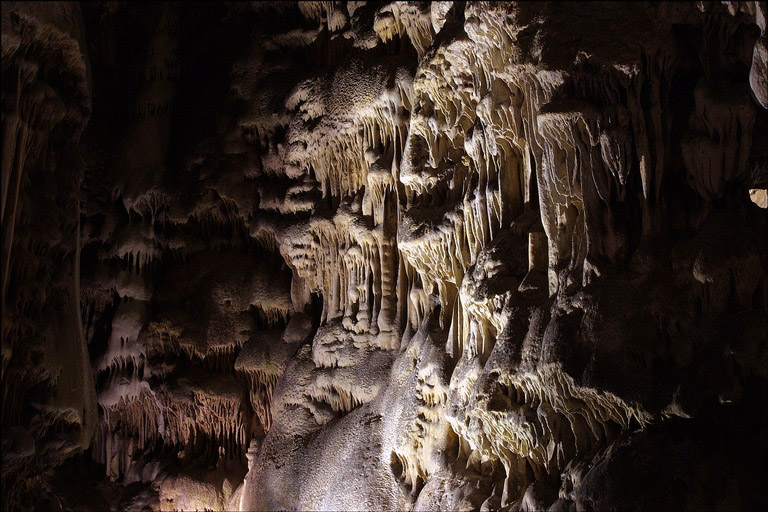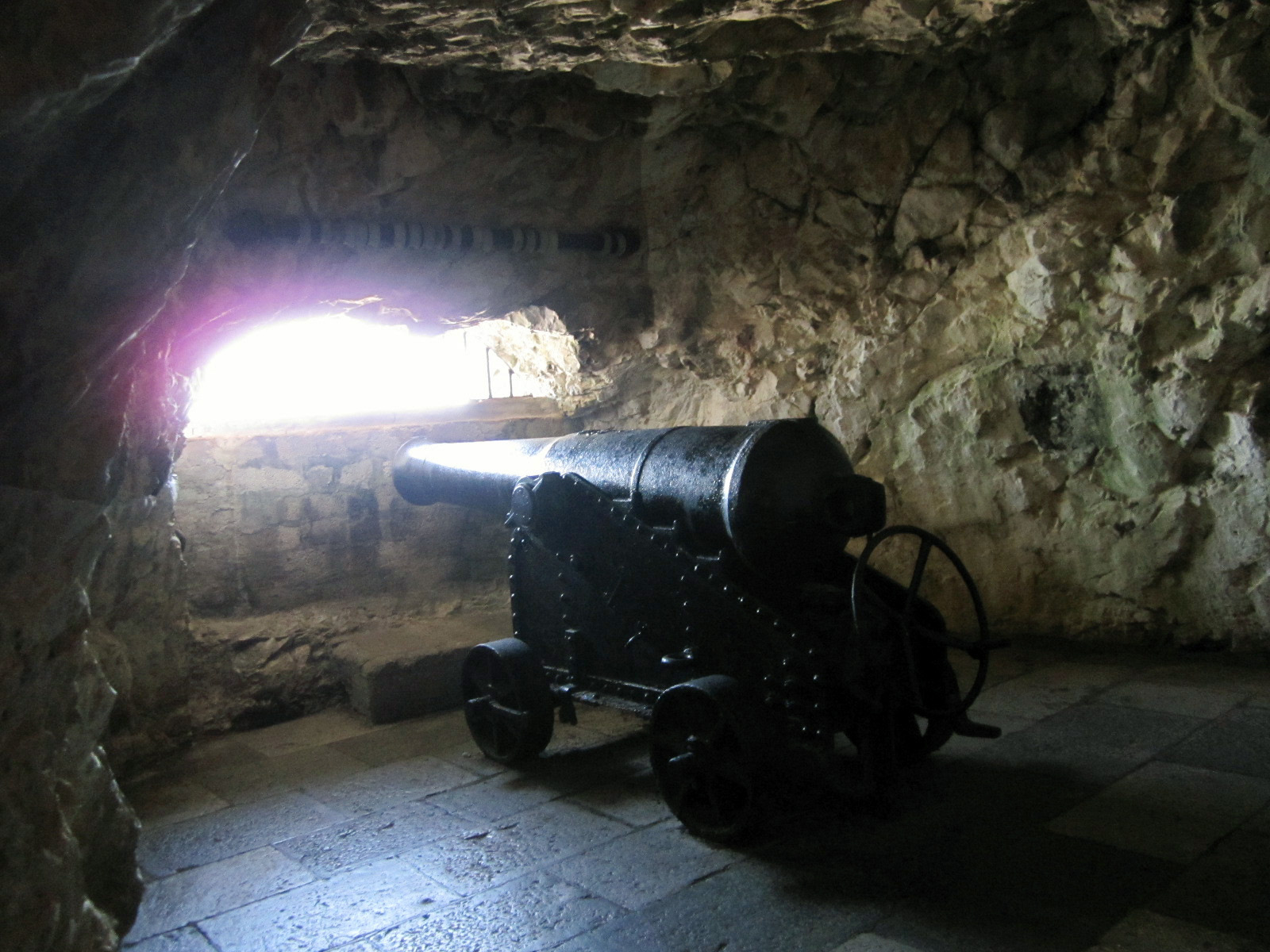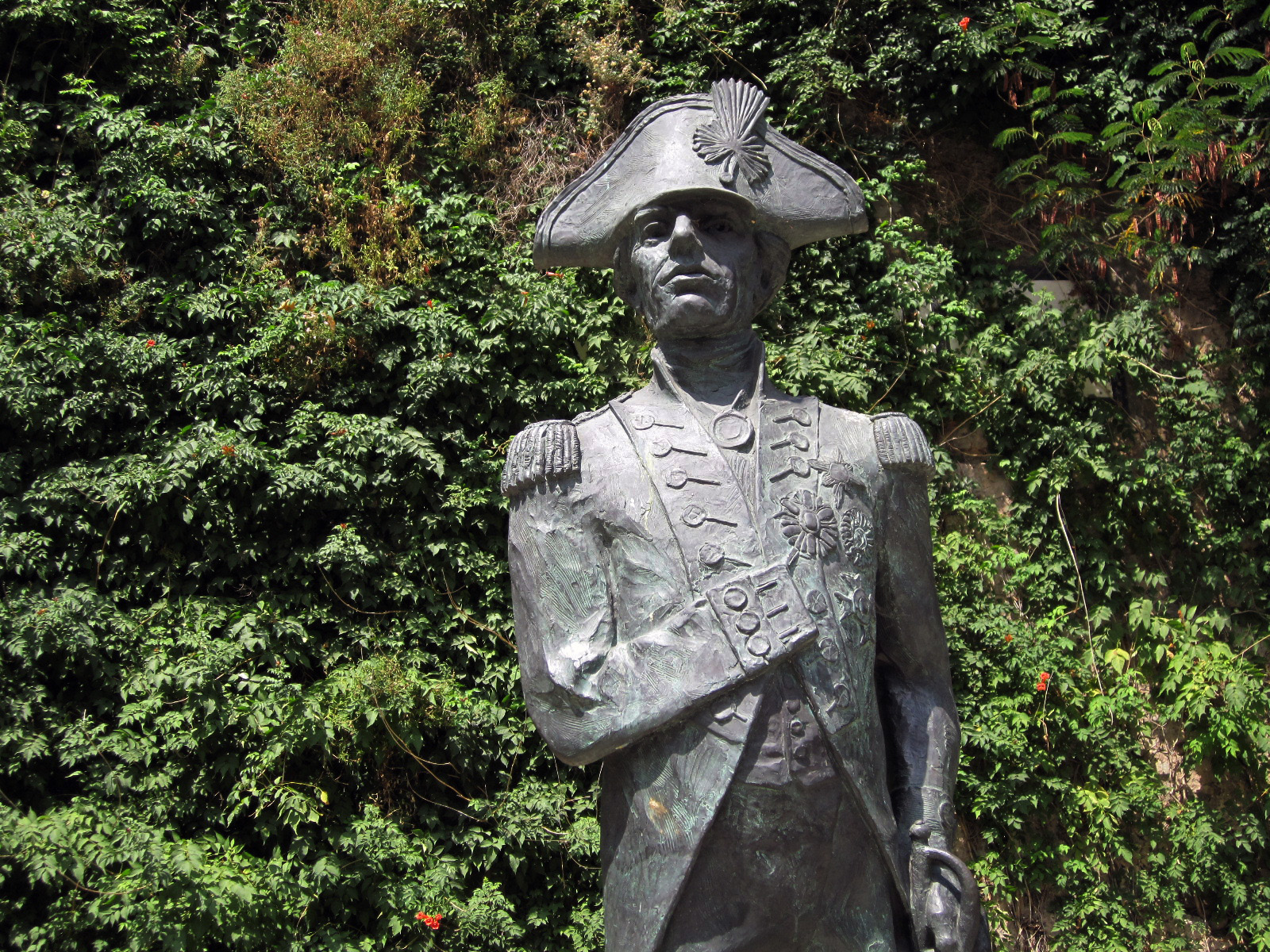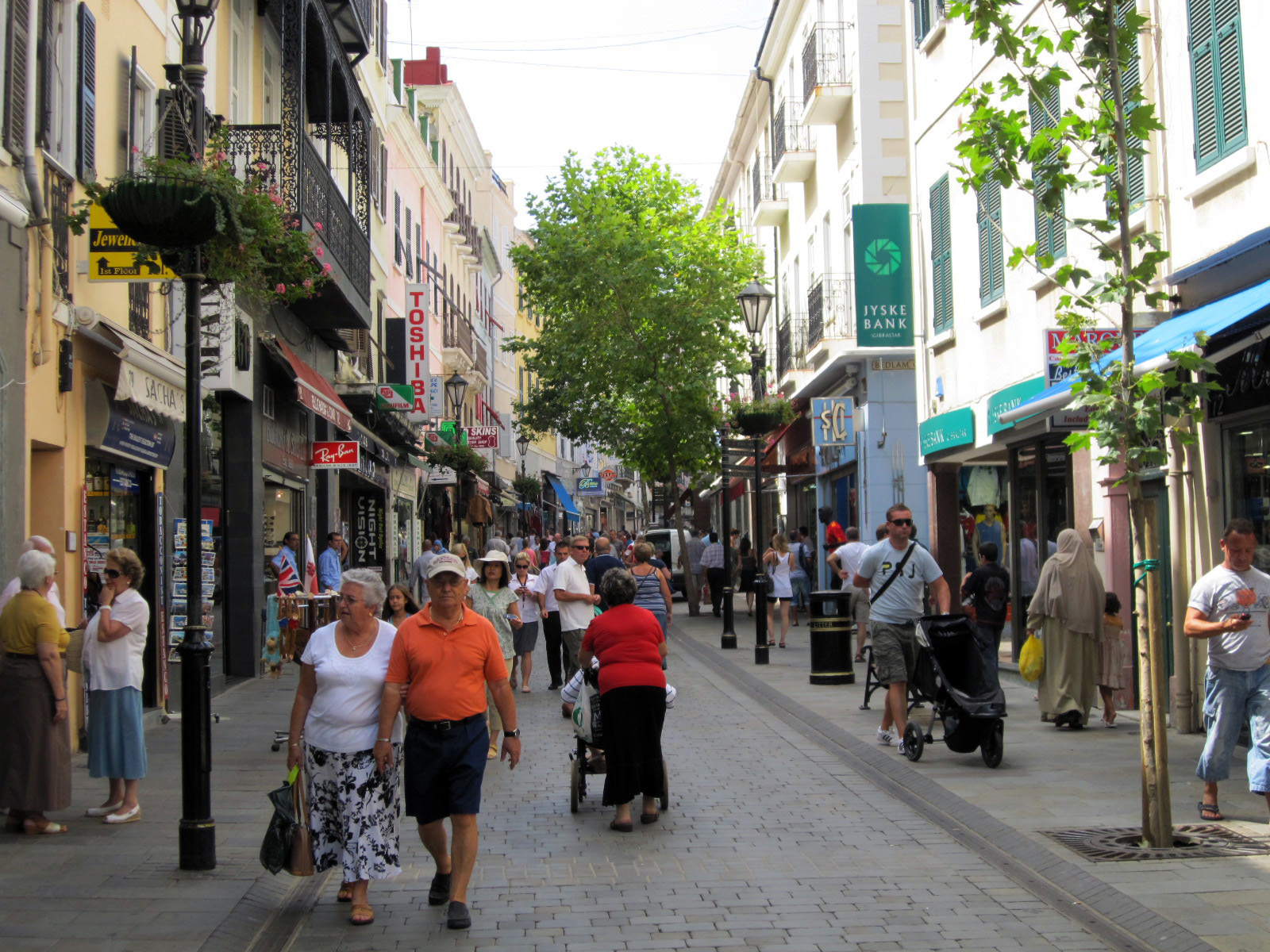 Although Gibraltar is technically in Spain, it’s really not, at least according the British. Gibraltar has been in the hands of the British since the Treaty of Utrecht in 1713, after the war of the Spanish Succession, when Great Britain, the Netherlands, Portugal, the House of Savoy and the Holy Roman Empire drew swords against France and Spain. Spain has been trying to rid the Iberian Peninsula of the British for a long time. They tried wars, embargoes and starvation but the little spit of land remains to this day, part of the British Empire. You still have to cross through a passport controlled border crossing and customs declaration. but once you’re in, it’s a Tax-Free, spend-lots kind of place.
Although Gibraltar is technically in Spain, it’s really not, at least according the British. Gibraltar has been in the hands of the British since the Treaty of Utrecht in 1713, after the war of the Spanish Succession, when Great Britain, the Netherlands, Portugal, the House of Savoy and the Holy Roman Empire drew swords against France and Spain. Spain has been trying to rid the Iberian Peninsula of the British for a long time. They tried wars, embargoes and starvation but the little spit of land remains to this day, part of the British Empire. You still have to cross through a passport controlled border crossing and customs declaration. but once you’re in, it’s a Tax-Free, spend-lots kind of place.
The ancient Greeks called this the Pillar of Hercules, the two rocks that separated land masses of Ancient Spain and Morocco. According to the legend of the 12 Labors of Hercules, this was his westernmost point of travel, overlooking the end of the world.
On a crisp day from our apartment in Estepona on the Costa del Sol, we can see the two land masses and it does kind of look like two large rocks. It’s all how you look at them. If the ancient Greeks sailed past Estepona they would have though the rocks were much closer than the actual 14 kilometers across the Strait of Gibraltar.
The name Gibraltar comes from the Berber general Tariq ibn-Ziyad who led the first Moorish invasion into Spain in 711. It was called “Jabal Tariq”, or the mountain of Tariq. Over the years Jabal Tariq became Gibraltar. The only remains of the Moors is the old lookout fortress, which is still used as part of the local prison.
 The upper part of the rock is a nature preserve for the 250 (or more) Barbary Macaques (referred to as the Gibraltar Apes). They’re the only wild monkeys in all of Europe and they are indeed wild. They’re used to living with the other inhabitants of the Rock, but they’re not sure of the laws of modern civilization. They roam the mountain in gangs and fight for territory and food. When food gets scarce they come into the town and woe be to those who leave their windows open. They’ve been known to snatch some pretty valuable things. However, they look so cute and playful that tourists can’t help themselves and reach out to play with the monkeys. We have been warned (quite a few times) to “beware!” They bite, they pick your pockets and they jump on you with their shit covered monkey fur. We got close, but not too close, although I was used as a springboard when one of them jumped on my back on his way to a recently opened bag of peanuts.
The upper part of the rock is a nature preserve for the 250 (or more) Barbary Macaques (referred to as the Gibraltar Apes). They’re the only wild monkeys in all of Europe and they are indeed wild. They’re used to living with the other inhabitants of the Rock, but they’re not sure of the laws of modern civilization. They roam the mountain in gangs and fight for territory and food. When food gets scarce they come into the town and woe be to those who leave their windows open. They’ve been known to snatch some pretty valuable things. However, they look so cute and playful that tourists can’t help themselves and reach out to play with the monkeys. We have been warned (quite a few times) to “beware!” They bite, they pick your pockets and they jump on you with their shit covered monkey fur. We got close, but not too close, although I was used as a springboard when one of them jumped on my back on his way to a recently opened bag of peanuts.
 The monkeys might have been on the rock prior to the British, but thanks to the Brits, they’ll be around a bit longer. The old superstition says if the monkeys ever leave, so will the British. Maybe this is why the Brits have put so much attention into keeping the monkey population thriving. Spain has tried everything possible to rid the Iberian Peninsula of the British. The only thing they haven’t thought of is removing the monkeys.
The monkeys might have been on the rock prior to the British, but thanks to the Brits, they’ll be around a bit longer. The old superstition says if the monkeys ever leave, so will the British. Maybe this is why the Brits have put so much attention into keeping the monkey population thriving. Spain has tried everything possible to rid the Iberian Peninsula of the British. The only thing they haven’t thought of is removing the monkeys.
From 1969 to 1982, Francisco Franco put into effect a blockade of all goods going in and out. Gibraltar had to get everything from Morocco until 1982. Cars weren’t allowed through the border until 1984.
In 2004 there was a referendum in Gibraltar and 97% (of the over 30,000 inhabitants) voted to remain as British over Spain. It looks like the Spanish will just have to learn to love the British being here.
We read the cable car is a great way to get to he top of the Rock but the tour van seemed a better idea. The cable car cost about the same price for the round trip but the price of the van tour included the entrance to both the St Michael’s cave and the Siege tunnels dug during the war with Spain from 1782-1783. It also included visits to the Ape dens, lookout points and a running commentary from Kevin our tour driver. If we had taken the Cable car we would have still had to walk around 6 km in the intense heat up and down the really steep hills. The heat had already surpassed 35°C (97°F) and the thought of climbing a mountain in this heat was way outside of my reality.
 There are more than 150 caves dug into the rock, covering close to 52 kilometers, some of them going back to Neanderthal times. St Michael’s is the largest, a Jurassic cave filled with stalactites and stalagmites formed from water dripping off the limestone. The cave’s been used for picnics, parties, duels and military hideouts. During World War II it was a hospital. These days a concert hall that also functions as the site of the annual Miss Gibraltar contest occupies the largest chamber. We were told that witches also gather here to invoke the spirits world. The tunnels go down a long way. One of the legends says that the cave is bottomless and actually connects Spain to Morocco under the Strait of Gibraltar, which could explain how the Barbary macaques got here.
There are more than 150 caves dug into the rock, covering close to 52 kilometers, some of them going back to Neanderthal times. St Michael’s is the largest, a Jurassic cave filled with stalactites and stalagmites formed from water dripping off the limestone. The cave’s been used for picnics, parties, duels and military hideouts. During World War II it was a hospital. These days a concert hall that also functions as the site of the annual Miss Gibraltar contest occupies the largest chamber. We were told that witches also gather here to invoke the spirits world. The tunnels go down a long way. One of the legends says that the cave is bottomless and actually connects Spain to Morocco under the Strait of Gibraltar, which could explain how the Barbary macaques got here.
The Siege tunnels in the Rock were dug out by the British to hold off the forces of Spain and France during the “Great Siege of Gibraltar” from Sept 1782 till the spring of 1783. Spain and France were supplying arms and support to the American Revolution. Thinking the British forces in Europe were weaker because of all the activity in the war with the american Colonists, Spain and France joined together again and attacked the British troops in Gibraltar.
 337’ of limestone tunnel was cut in just 52 weeks. Close to 500 men died of suffocation before airshafts were blown into the sides of tunnel. The shear accomplishment of building the tunnels is homage to the strength and fortitude of the British troops. They prevailed. The Great Seige lasted for 3 years and 7 months culminating with the “Grand Assault” of September 13, 1782. The Spanish and French amassed 30,000 by sea and 35,000 by land to attack the British Fort. Over 80,000 spectators covered the hills to watch the defeat of the British. But the British turned them back and held the rock till reinforcements finally arrived in early 1783. The British lost the war in America but won the war in Gibraltar.
337’ of limestone tunnel was cut in just 52 weeks. Close to 500 men died of suffocation before airshafts were blown into the sides of tunnel. The shear accomplishment of building the tunnels is homage to the strength and fortitude of the British troops. They prevailed. The Great Seige lasted for 3 years and 7 months culminating with the “Grand Assault” of September 13, 1782. The Spanish and French amassed 30,000 by sea and 35,000 by land to attack the British Fort. Over 80,000 spectators covered the hills to watch the defeat of the British. But the British turned them back and held the rock till reinforcements finally arrived in early 1783. The British lost the war in America but won the war in Gibraltar.
 In 1805, under the command of Vice Admiral Horatio Lord Nelson, the British took on the Spanish again, this time it was an outnumbered British Navy against the combined French and Spanish Navy of Napoleon in the Cape of Trafalgar, off the Atlantic Coast of Spain near what is now called Los Canos de Meca. Nelson was killed during the battle and his ship, the HMS Victory was crippled, but the British victory here gave the British superiority of the sea.
In 1805, under the command of Vice Admiral Horatio Lord Nelson, the British took on the Spanish again, this time it was an outnumbered British Navy against the combined French and Spanish Navy of Napoleon in the Cape of Trafalgar, off the Atlantic Coast of Spain near what is now called Los Canos de Meca. Nelson was killed during the battle and his ship, the HMS Victory was crippled, but the British victory here gave the British superiority of the sea.
Nelson’s body was preserved in a cask of brandy and tied to the mainmast of the Victory. Oddly enough, the HMS Pickle towed the pickled Nelson back to Gibraltar. Nelson was shipped back to England for a grand funeral but there are still some of the casualties buried here in the Trafalgar cemetery in Gibraltar.
 Although the British Navy used to provide most of the economy of the small country, these days it’s Internet gambling. Gibraltar has a very favorable tax code for gambling. The other main industry is tourism. After-all, everything costs less here. This is a VAT free country. It’s the biggest duty-free shop on the planet. No wonder the locals wanted to keep Gibraltar British.
Although the British Navy used to provide most of the economy of the small country, these days it’s Internet gambling. Gibraltar has a very favorable tax code for gambling. The other main industry is tourism. After-all, everything costs less here. This is a VAT free country. It’s the biggest duty-free shop on the planet. No wonder the locals wanted to keep Gibraltar British.
The main street is called, of course, Main Street. It’s about 1km long filled with watches, jewelry, alcohol, perfume, tobacco and leather goods. It’s the Golden Sixpick of dutyfree.
Everything is a good deal for day trippers, although the gasoline prices are really high and the cafes and restaurants are pretty expensive. The local eats in Gibraltar are pretty good. One of the treats was calentita, a beadlike pizza dough made with chickpea flour and covered with a sauce of onions, mushrooms and tomatoes.
There is a customs house at the border where the British (wearing Bobby hats) check your passports on the way out. No one ever checks to see what you’ve brought in or out of the Rock. The “items to declare” lane seems forever empty.
You must be logged in to post a comment.